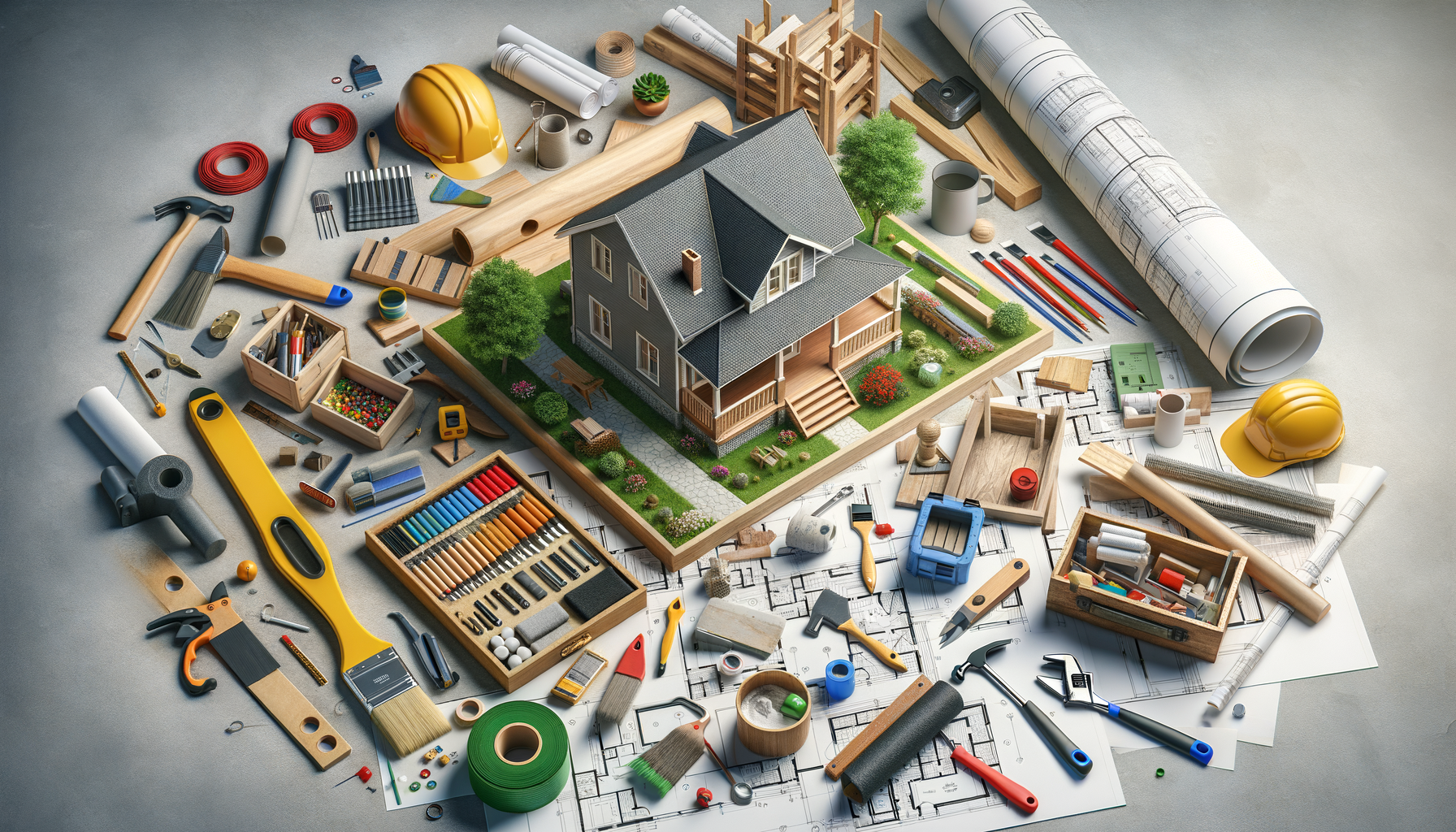Understanding the Scope of Your Home Remodeling Project
Home remodeling projects can vary greatly in scope, from minor updates to major overhauls. Understanding the extent of what you wish to achieve is crucial before diving in. Are you looking to update a single room, or is a whole-house renovation on the horizon? This decision will impact everything from budget to timeline.
Consider the reasons behind your remodeling project. Are you aiming to increase your home’s value, improve functionality, or simply refresh the aesthetics? Each goal will guide your decisions and help prioritize tasks. For instance, if boosting property value is a top priority, focusing on key areas like kitchens and bathrooms can offer a significant return on investment.
It’s also essential to assess the current state of your home. Conducting a thorough inspection can reveal underlying issues that may need addressing, such as outdated wiring or plumbing. This step not only helps in planning but also prevents unexpected surprises during the remodeling process.
- Define your remodeling goals
- Assess the current state of your home
- Prioritize tasks based on goals and needs
Budgeting and Financing Your Remodeling Project
Setting a realistic budget is a cornerstone of any successful remodeling project. Without a clear financial plan, costs can quickly spiral out of control. Begin by researching the average costs for similar projects in your area. This will provide a baseline for your budget.
Consider all potential expenses, including materials, labor, permits, and unexpected costs. It’s wise to set aside a contingency fund, typically 10-20% of the total budget, to cover unforeseen expenses. This buffer can help prevent financial stress if surprises arise during construction.
Exploring financing options is another critical step. Home equity loans, personal loans, and credit lines are common avenues for funding home improvements. Each option has its pros and cons, so evaluate them carefully to find the best fit for your financial situation.
- Research average costs for similar projects
- Include a contingency fund in your budget
- Explore various financing options
Choosing the Right Contractors and Professionals
Hiring the right professionals can make or break your remodeling project. Start by seeking recommendations from friends, family, or online reviews. Once you have a shortlist, interview potential contractors to gauge their experience and compatibility with your project.
Check credentials and verify licenses to ensure compliance with local building codes. Request references and visit previous job sites if possible. This firsthand insight can provide a clearer picture of the contractor’s workmanship and reliability.
Communication is key when working with professionals. Establish clear lines of communication and set expectations from the beginning. Regular updates and transparency can help prevent misunderstandings and ensure the project stays on track.
- Seek recommendations and read reviews
- Verify credentials and licenses
- Establish clear communication channels
Design and Planning Considerations
The design phase is where your vision for the remodel comes to life. Collaborate with designers or architects to create plans that align with your goals and budget. Consider both functionality and aesthetics to ensure the space meets your needs while reflecting your style.
Think about how the remodeled space will integrate with the rest of your home. Consistency in design elements such as color schemes, materials, and architectural styles can create a cohesive look. Additionally, consider the long-term implications of your design choices. Timeless designs often provide better value and appeal over trendy, short-lived styles.
Incorporating sustainable and energy-efficient elements can enhance the value and comfort of your home. From energy-efficient appliances to eco-friendly materials, these choices can reduce utility costs and contribute to a healthier environment.
- Collaborate with designers for cohesive plans
- Consider long-term design implications
- Incorporate sustainable and energy-efficient elements
Managing the Remodeling Process
Effective management is crucial for keeping your remodeling project on schedule and within budget. Start by creating a detailed timeline with milestones and deadlines. This roadmap will guide the project and help track progress.
Regularly communicate with your contractor and team to address any issues promptly. Being proactive in resolving problems can prevent delays and additional costs. Keep detailed records of all transactions, communications, and changes to the project scope.
Finally, prepare for the impact of remodeling on your daily life. Depending on the project’s scope, you may need to make temporary living arrangements or adjust your routines. Planning ahead can minimize disruptions and make the process more manageable.
- Create a detailed timeline with milestones
- Maintain open communication with the team
- Prepare for lifestyle adjustments during remodeling




Leave a Reply